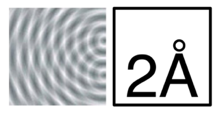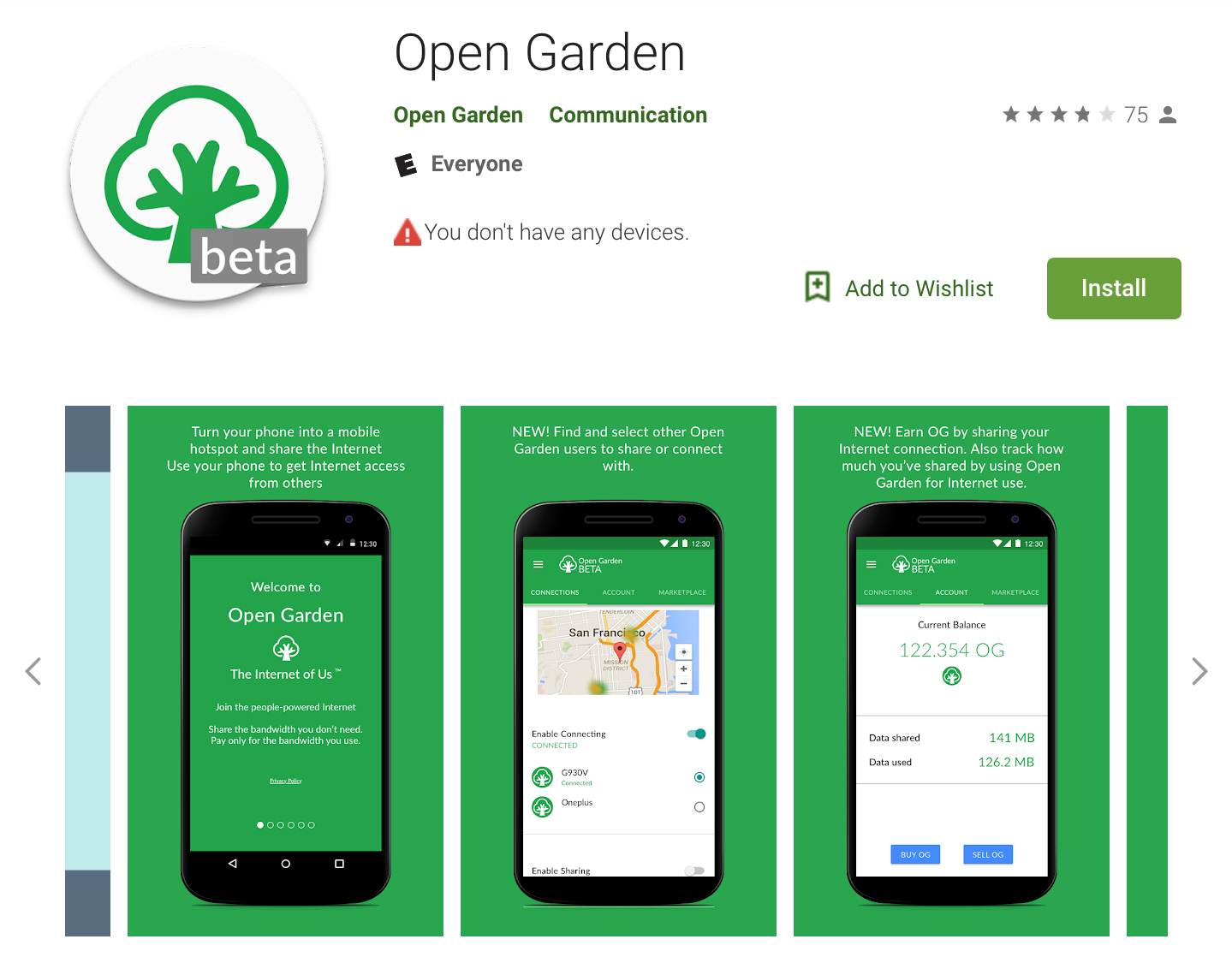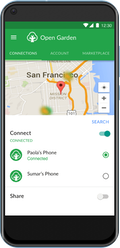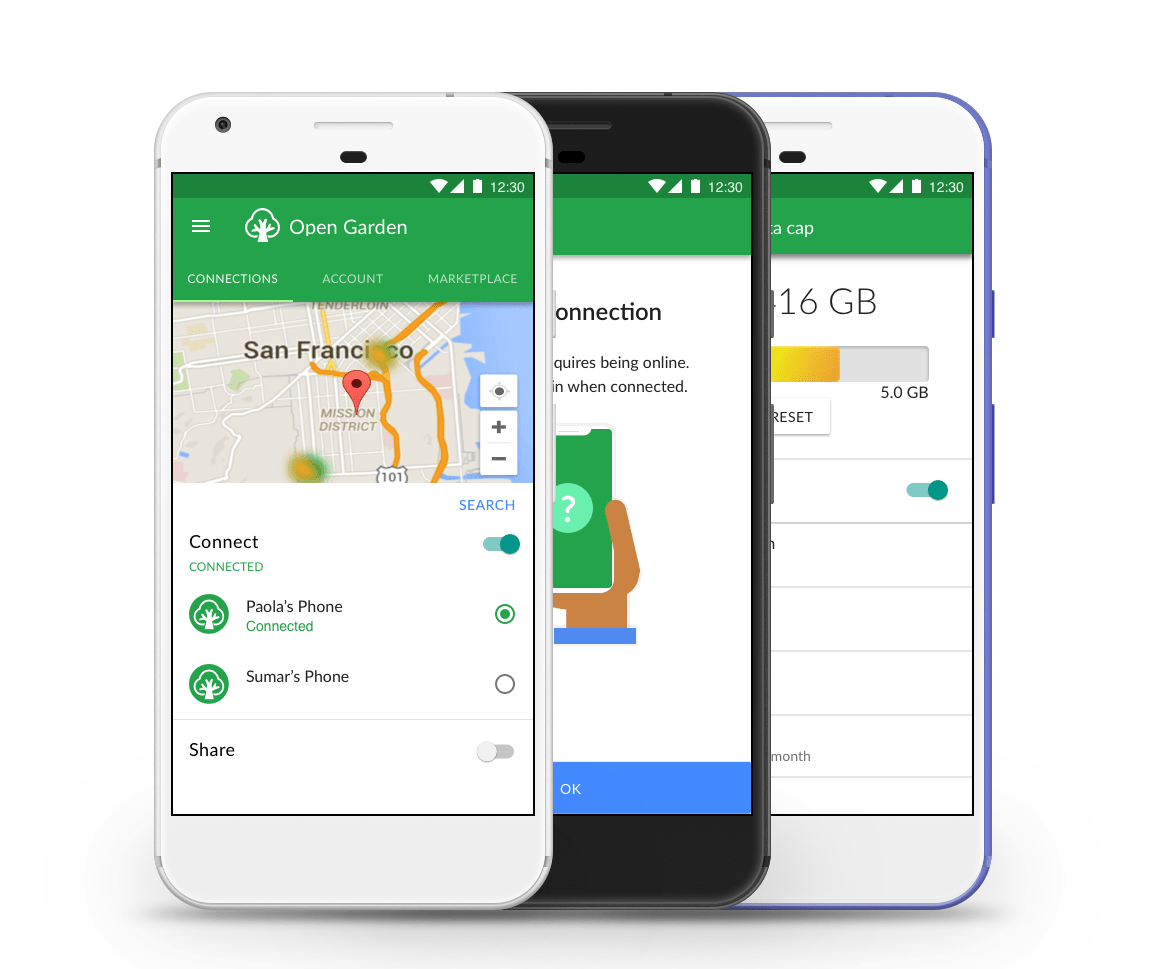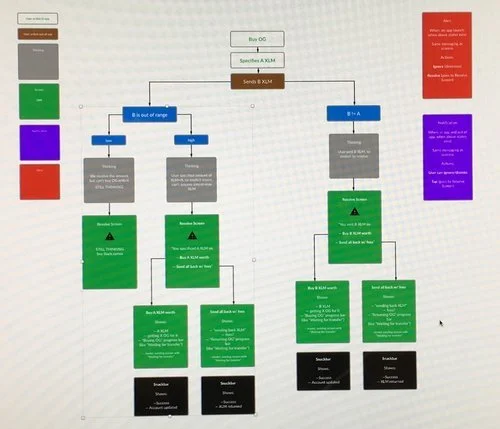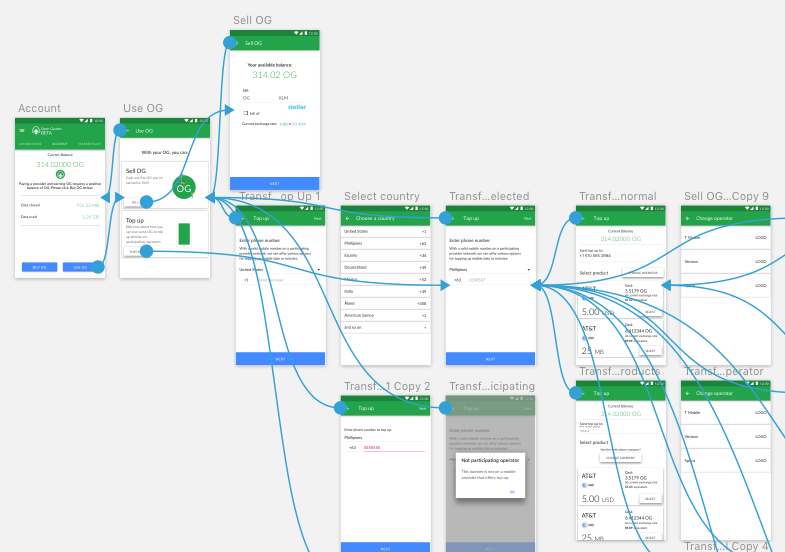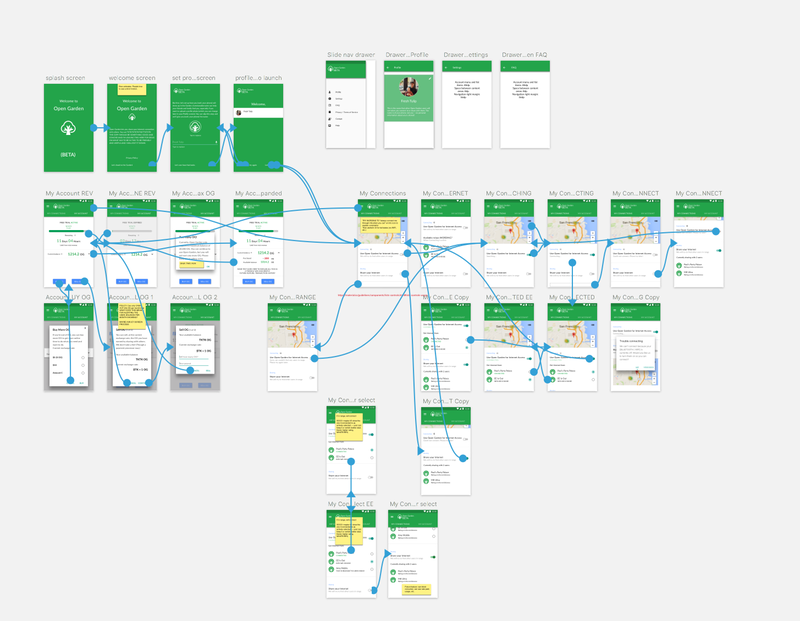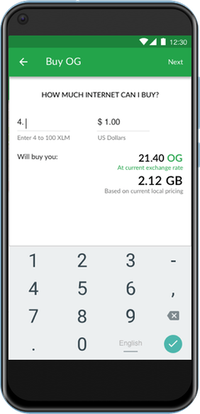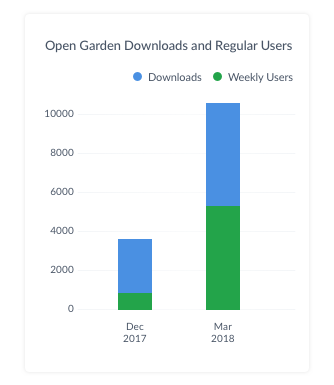Open Garden, Lead Designer
Open Garden’s mission was to enable distributed, democratized internet access, enabling any phone to become an access point or connect to one. The company grew to 30 people with international investors and reach after shipping products to Google Play and the App Store. Increases app downloads and user engagement by 5x.
Responsibilities
Led feature strategy and interaction design, showing a 500% increase in app downloads and and 350% increase in weekly user engagement, with primarily 4- and 5-star user reviews
Led design strategy with founders and stakeholders, mentored and managed junior designers
Built collaborative and agile design process with development team, reducing technical costs and errors
Built information architecture, wireframes, design system, high-fidelity assets
Rebuilt the interaction and information architecture of a task critical to the company business model to see an almost 80% reduction in user abandonment of the task
Open Garden initially shipped to the Google Play store and garnered solid reviews. The app was innovative in using peer networks to help people access the larger internet without incurring costly fees while traveling, or allow communities to share the costs of one internet access point and account.
Existing versions of Open Garden centered the interface on lists of access points. I created a map-first UI to allow people to see what was near, whether they needed to reposition, or anticipate coverage as they traveled. In usability testing, this showed an order of magnitude higher task completion rate.
(Second screen) I wrote, designed, and animated an onboarding flow that tested well in helping people immediate start using the app. (Third screen) I worked with our lead designer to create and active, responsive, and comprehensible affordance to help users understand their usage, limits, and costs.
Early on, I created an Airtable for collecting, making sense of, and prioritizing user experiences as we iterated designs and features.
With complex interaction flows, I found working out the conditional logic helped with more rapid delivery of prototypes.
We used Sketch, Sketch plugins, InVision for interactive prototyping, and Abstract for version control and developer handoff.
The interaction flow became more complex as payment through the OG coin was added (which required initial purchasing of Etherium). My initial hypothesis that more, simpler steps was better, due to potential security issues with crypto wallets, was confirmed in usability testing.
In a case of "simple solutions can take a lot of work", we have a UI that guided users through the process of translating real-world pricing, through an intermediate currency, to what value they could purchase.
In presenting findings to founders and investors, I could show that these changes led to better reviews and correlated with increased usage and adoption.
